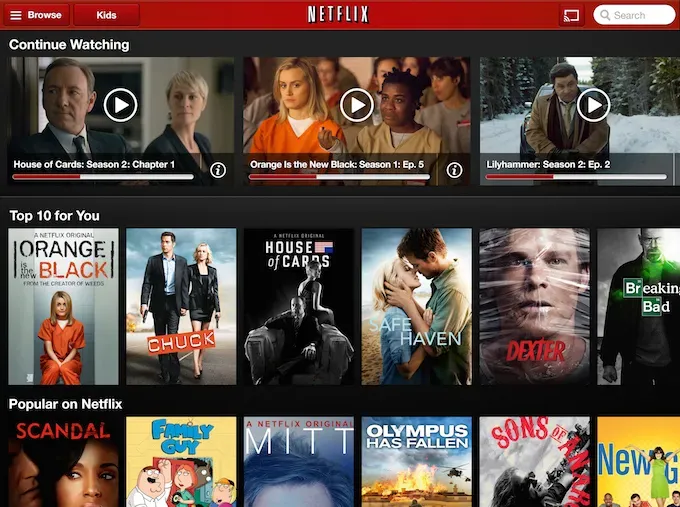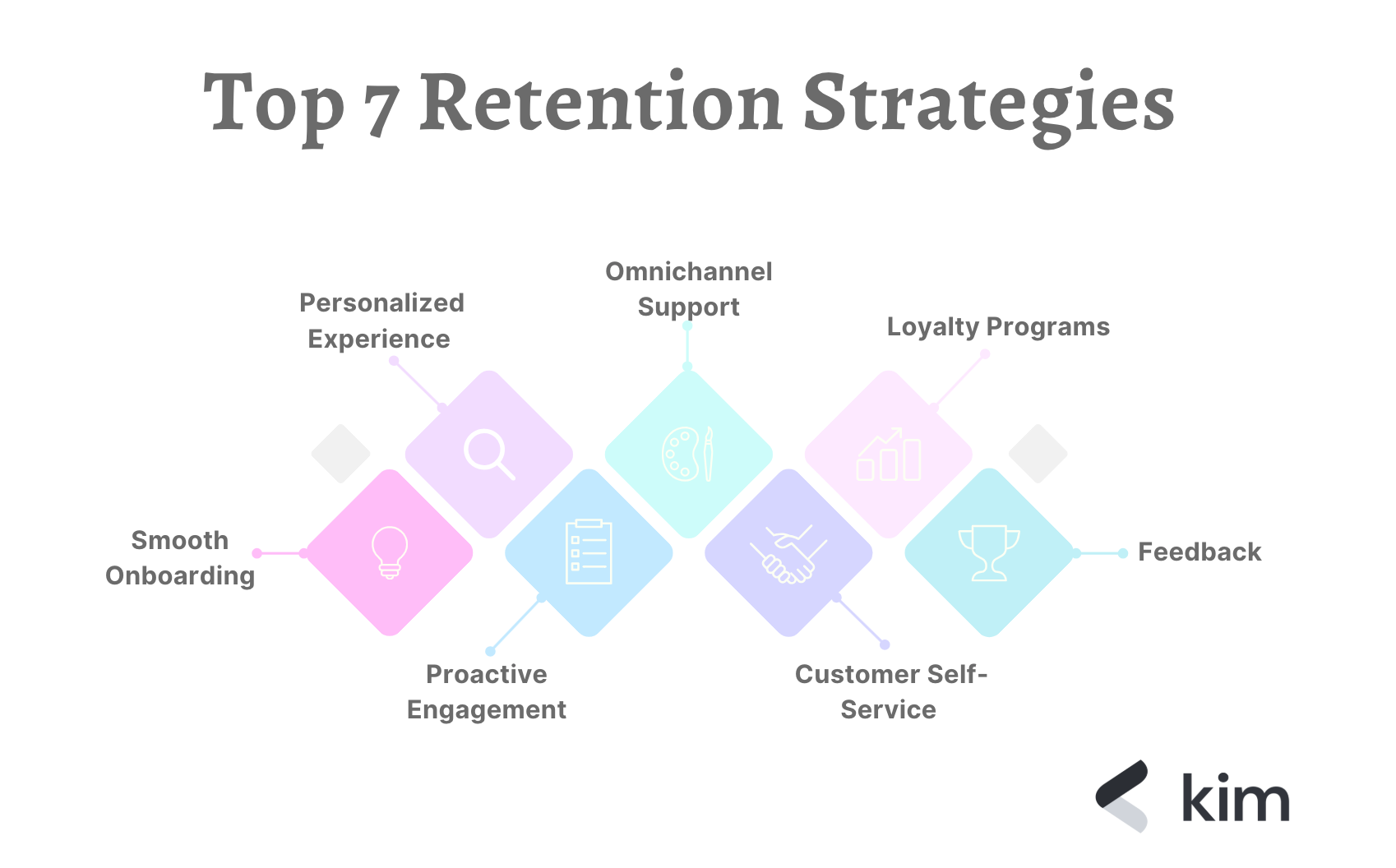7 Proven Customer Retention Strategies Every Business Should Use in 2025
Ever notice how Netflix somehow always has shows you’ll actually enjoy? That’s not magic, it’s customer retention. By understanding what keeps viewers coming back, Netflix ensures subscribers stay month after month. Retention isn’t just about making a sale; it’s about building habits, trust, and loyalty so customers choose you again and again.

In today’s competitive market, businesses know that best customer service is essential. Brands like Best Buy and Amazon follow this principle by proactively supporting customers, offering personalized recommendations, and rewarding loyalty. It’s not just about selling products, it’s about making sure your customers stick around, engage, and return for the long term.
What is Customer Retention?
Simply put, customer retention is the practice of keeping your existing customers engaged and happy so they continue doing business with you. Instead of spending huge sums of money to attract new clients, you focus on the ones who already know, like, and trust your brand.
Why does retention matter? Well, acquiring a new customer can cost five times more than retaining an existing one. And existing customers tend to spend 67% more than new ones. That’s why top companies like Zappos invest heavily in retention strategies, it’s not just about keeping customers, it’s about driving revenue efficiently.
Retention also builds trust. When your customers know they can rely on you for consistent customer service experience, they’re more likely to become advocates, leaving positive reviews, referring friends, and engaging with your brand repeatedly.
Customer Retention Rate (CRR)
To measure how well you’re keeping your customers, you need to understand your customer retention rate (CRR). The formula is simple:
CRR=[(E−N)/S×100]
Where:
- E = Number of customers at the end of a period
- N = Number of new customers acquired during that period
- S = Number of customers at the start
A high retention rate is a sign that your customer care software, customer service advisors, and overall engagement strategies are effective. Data shows that even a 5% increase in retention can boost profits by 25–95%, which is why customer support remote teams and live chat support outsourcing have become vital for many businesses.
What Good Customer Retention Looks Like:-
| Industry | Average Retention Rate | Excellent Retention Rate |
|---|---|---|
| SaaS/Technology | 35-40% | >60% |
| Retail | 20-25% | >40% |
| Financial Services | 30-35% | >50% |
| E-commerce | 25-30% | >45% |
7 Retention Strategies You Should Try
Retention isn’t about luck, it’s about strategy. Here are seven proven ways to keep your customers loyal and happy.

1. Smooth Onboarding
First impressions are crucial. Onboarding sets the tone for the entire customer relationship. If customers feel confused, lost, or unsupported in the first days, they’re less likely to stick around.
Take Amazon, for example. When a new customer signs up, they’re guided with simple tutorials, recommended products, and follow-up emails that make using the platform easy and intuitive. This type of onboarding ensures customers feel supported, which enhances long-term loyalty.
Providing guides, eBooks, or video tutorials through your customer service software can make the transition smooth and enjoyable. Even simple gestures like a welcome email with tips or a thank-you note can go a long way. Remember, the way you treat customers at the start often shapes their perception of your brand forever.
2. Personalized Customer Experience
Personalization is no longer optional, it’s expected. But it’s not just about addressing someone by their first name. True personalization requires understanding preferences, behaviors, and needs.
Netflix is a perfect example. Their “For You” section shows content based on past viewing habits, while Spotify recommends playlists tailored to your tastes. These companies use data-driven insights to create a customer service experience that feels personal, thoughtful, and engaging.
You can also use AI-powered virtual assistants to personalize interactions. For example, a chatbot can suggest products based on browsing history, send reminders about items left in a cart, or offer discounts for returning customers. This approach ensures your customers feel recognized and valued, a key ingredient for loyalty.
3. Omnichannel Support
Customers expect help everywhere, on your website, social media, email, or even messaging apps. Omnichannel support ensures that no matter where your customer reaches out, they receive consistent and timely assistance.
Consider a Gen Z-focused apparel brand. On Instagram, the tone might be casual and playful, while email communication is slightly more formal. Matching your messaging style to the platform and audience improves satisfaction and reinforces your brand voice.
The goal is simple: be where your customers are and speak their language. Whether it’s a quick reply via chat or resolving a complaint via email, consistent support strengthens loyalty.
4. Loyalty Programs
Everyone loves to feel like part of an exclusive club. Loyalty programs reward repeat purchases and make customers feel appreciated.
Starbucks Rewards is a great example, customers earn points with every purchase, unlock free drinks, and receive early access to new products. Similarly, Sephora Beauty Insider gives members access to exclusive products and events.
Loyalty programs are more than discounts; they create a sense of community. Customers feel like insiders, which fosters deeper connections with your brand. Offering perks, early access, or members-only content through customer care outsourcing can significantly boost retention.
5. Continuous Feedback
Feedback is gold. Regularly asking customers what they like, dislike, or want to see improved not only provides valuable insights but also makes customers feel heard.
Simple methods like surveys, follow-up emails, or direct calls from a customer service advisor can go a long way. The key is showing that feedback isn’t just collected but also acted upon. Customers love seeing that their opinions lead to real improvements.
6. Customer Self-Service
Many customers prefer to solve issues on their own. Providing easy-to-access self-service options can improve satisfaction while reducing strain on support teams.
FAQs, interactive guides, and Chatbots are excellent tools for self-service. These options allow customers to get quick answers without waiting, which enhances the best customer experience.
For example, Shopify stores often integrate AI customer service agents that guide users through common issues, like payment problems or account management. This combination of accessibility and automation ensures customers feel supported at all times.
7. Proactive Engagement
Don’t wait for customers to reach out with problems, reach out to them first. Proactive engagement can include updates, helpful tips, reminders, or even personalized offers.
Best Buy customer service exemplifies this approach. Their team often contacts customers about product recalls, new offers, or troubleshooting advice before issues arise. This kind of attention shows care and builds trust, reinforcing loyalty.
Proactive engagement can be implemented in simple ways:
- Sending tips or usage guides after purchase
- Notifying customers about upcoming sales or promotions
- Following up to ensure satisfaction with a recent order
When done consistently, proactive engagement signals that you’re invested in your customers’ experience, not just their money.
Why Retention Beats Acquisition
While acquiring new customers feels exciting, retention drives long-term profitability. Here’s why:
- Lower costs: It’s cheaper to keep existing customers than acquire new ones.
- Higher spend: Loyal customers tend to spend more per transaction.
- Brand advocacy: Happy customers become promoters, sharing their positive experiences.
- Stability: Retained customers provide predictable revenue streams, essential for planning and growth.
Top companies like Amazon, Zappos, and Netflix prove that investing in customer care software, and quality support teams pays off. By combining smooth onboarding, personalization, omnichannel support, loyalty programs, continuous feedback, self-service, and proactive engagement, businesses can create a customer experience that’s hard to beat.
Conclusion
Customer retention isn’t about luck, it’s about deliberate, thoughtful strategies. From onboarding to proactive engagement, each step is a chance to strengthen your bond with customers.
So, treat every customer like a VIP, invest in tools like AI-powered virtual assistants or customer support remote teams, and watch loyalty grow. Because when your customers stick around, your business doesn’t just survive, it thrives.
Ready to boost customer loyalty and retention? Start implementing these strategies today and see the difference for yourself.